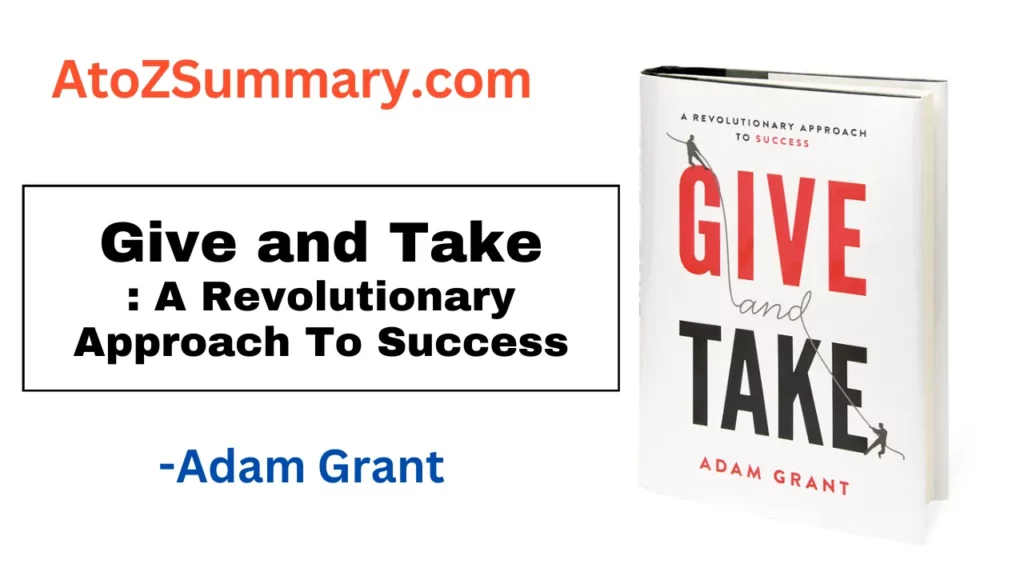
| Title | Getting to Yes: Negotiating Agreement Without Giving In |
| Authors | Roger Fisher & William Ury |
| Publication Date | 1981 |
| Genre | Non-fiction, Self-help, Business, Negotiation |
| Synopsis | “Getting to Yes” is a guide to effective negotiation that presents a framework for resolving conflicts and reaching mutually beneficial agreements. The authors introduce the concept of “principled negotiation” and outline four key principles: separate the people from the problem, focus on interests instead of positions, generate multiple options for mutual gain, and insist on objective criteria. They also offer practical advice on communication, preparation, and dealing with difficult situations. |
| Key Concepts | Principled negotiation, Separating people from the problem, Focusing on interests instead of positions, Generating multiple options for mutual gain, Insisting on objective criteria, BATNA (Best Alternative to a Negotiated Agreement) |
| Impact | “Getting to Yes” is regarded as a classic in the negotiating genre and had a significant impact on the subject. It has been translated into 30 languages and has sold over 3 million copies worldwide. The book’s principles have been applied in a variety of settings, from business negotiations to international diplomacy. |
Introduction
Getting to Yes: Negotiating Agreement Without Giving In is a non-fiction book published by Roger Fisher and William Ury, both Harvard Law School professors and co-directors of the Harvard Negotiation Project, which was formed in 1979 to research the principles of effective negotiation. The authors and their students interviewed numerous great negotiators to establish why their agreements were successful, and their findings were summarised in five main concepts. In 1991, the book was reprinted with Bruce Patton as an extra author. Beginning in 1998, it was a Business Week bestseller for more than three years, and it is regularly used in schools to teach young people the art of bargaining.
Summary
Fisher and Ury begin by discussing positional bargaining in negotiation, which occurs when each participant to a discussion begins from a different stance and strives to establish a mutually acceptable agreement. They then select and define five important principles that would assist negotiation sides in achieving the greatest potential outcome for themselves. The writers’ first piece of advise is to “separate the people from the problem.” People’s perspectives on issues tend to emerge from underlying sentiments and beliefs; therefore, people skills are as important to effective negotiation as the actual content of the solutions being given.
The authors highlight three distinct types of people issues that may occur during a negotiation: misinterpretation of opposing party viewpoints owing to divergent interpretations of facts, emotional reactions that lead to heated disputes, and miscommunication between parties. To minimise misunderstanding, the authors recommend that participants to a negotiation ensure that they genuinely grasp the other party’s point of view, manage their own feelings while using empathy to calm the other party’s emotional outbursts & listen attentively to the other party’s arguments.
Fisher and Ury’s second main piece of advise to readers is to focus on “interests, not positions.” This means that negotiators should endeavour to comprehend the bigger goals and objectives underlying the other party’s stance in order to be more flexible in presenting solutions. The authors encourage negotiators not to become focused on a single viewpoint or solution, but to evaluate a variety of options that would satisfy both sides’ underlying interests. Understanding the greater interests behind people’s views would aid negotiators in carrying out the third guideline, “invent options for mutual gain.” Negotiators may explore ideas that are advantageous to both sides once they have determined each party’s interests and how they intersect. This step guarantees that both parties’ interests are heard & taken into account by the other.
The fourth successful negotiation strategy is to “focus on objective criteria.” The goal of this strategy is to guarantee that both sides’ requests are acceptable and that no party takes unfair advantage of the other. Fisher and Ury motivate negotiators to ensure that the solutions reached are reasonable & practicable, and to avoid being threatened or forced into adopting unrealistic solutions. The authors’ fifth and final negotiating theory is for each side to examine their BATNA, or “best alternatives to a negotiated agreement.”
According to the writers, the entire objective of negotiation is to get a solution that is better than what a party might have without the discussion. To that purpose, the authors advise negotiators to establish their “bottom line,” or the utmost worst proposition they are ready to accept, and then reject any proposals that go below this line. The goal of this technique is to overcome power imbalances between negotiation parties and guarantee that the weaker party benefits from the negotiation as well and does not end up becoming less fortunate than it would have been without the negotiation.
Fisher and Ury also advise negotiators on how to cope with opposing parties that engage in “dirty,” unprincipled techniques in their discussions. They recommend using “negotiation jiujitsu” to deflect personal assaults and redirect the dialogue back to the problems at hand. Unprincipled negotiators, according to Fisher and Ury, may also utilise dirty methods such as deception, emotional manipulation, or bullying tactics to compel opposing parties into giving them what they want. The authors encourage negotiators not to yield or reciprocate dirty tricks, but rather to recognise them, call them out for what they are, and set ground rules for the discussion.
The key topics of Getting to Yes include negotiating, communication, social psychology, emotion management and comprehending opposing perspectives. The book provides a step-by-step guide to successful mediation in daily scenarios including legal disputes, business dealings & pay negotiations.
About the Authors
Sure! Here is a table of author details for Roger Fisher and William Ury:
| Author | Roger Fisher | William Ury |
|---|---|---|
| Date of Birth | May 28, 1922 | December 12, 1948 |
| Place of Birth | Evanston, Illinois, United States | Ann Arbor, Michigan, United States |
| Date of Death | August 25, 2012 | December 1982 |
| Nationality | American | American |
| Education | Harvard College (B.A.), Harvard Law School (LL.B.) | Yale University (B.A.), Harvard Law School (LL.B.) |
| Field | Law, Negotiation, Conflict Resolution | Negotiation, Conflict Resolution |
FAQs
What are the main ideas of “Getting to Yes”?
The book highlights the importance of focusing on interests rather than positions, exploring options for mutual gain, using objective criteria and separating people from the problem. The authors also emphasize the benefits of working towards a win-win outcome that benefits all parties involved.
Who should read “Getting to Yes”?
Anybody who wishes to strengthen their negotiating abilities, whether in personal or professional contexts, should read “Getting to Yes.” Businesspeople, attorneys, diplomats, mediators, and anybody else who regularly handles disagreements may find it particularly helpful.
Is “Getting to Yes” relevant today?
Yes, the ideas presented in the book are still in use today and have been put to good use in a variety of fields including business, law, politics and international diplomacy.
Are there any other books that are similar to “Getting to Yes”?
Yes, some other books that share similar themes and approaches include “Crucial Conversations” by Kerry Patterson, “Difficult Conversations” by Douglas Stone, Bruce Patton & Sheila Heen and “Negotiation Genius” by Deepak Malhotra and Max Bazerman.









![Regretting You Summary, Themes, Synopsis & Characters [Book by Colleen Hoover] Regretting You Summary, Themes, Synopsis & Characters [Book by Colleen Hoover]](https://atozsummary.com/wp-content/uploads/2023/05/Regretting-You-Summary-Themes-Synopsis-Characters-Book-by-Colleen-Hoover-1024x576.webp)

